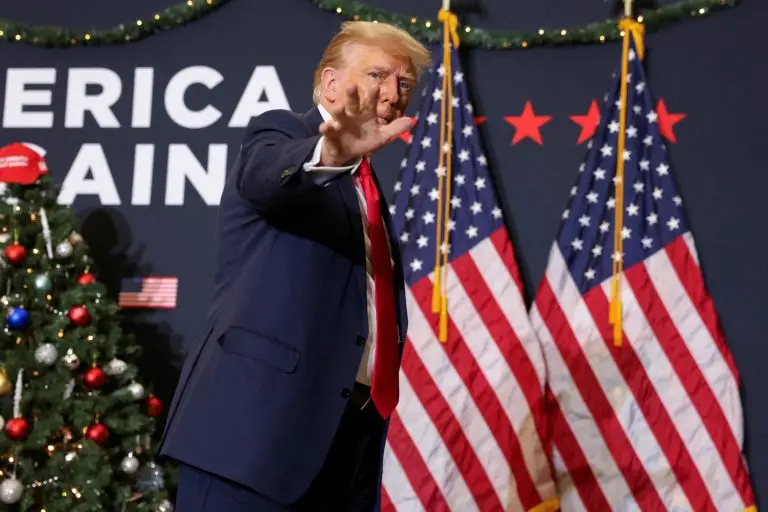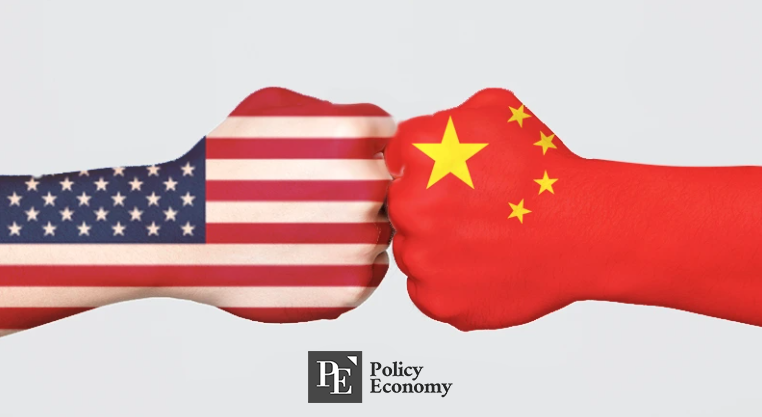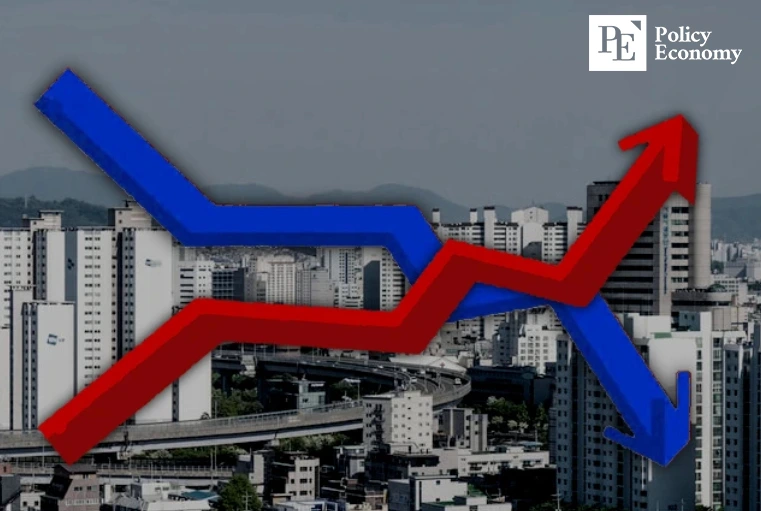[동아시아포럼] 경제보다 안보를 우선시하는 미국의 인도 태평양 정책
무역 정책에 대한 민주당 내 이익 집단 간 분열 IPEF의 출범, 그러나 미국의 시장접근 허가 없이는 반쪽짜리 아시아 지역에서 중국에 뒤처지는 상황, 경각심 가져야
[동아시아포럼]은 EAST ASIA FORUM에서 전하는 동아시아 정책 동향을 담았습니다. EAST ASIA FORUM은 오스트레일리아 국립대학교(Australia National University)의 크로퍼드 공공정책 학교(Crawford School of Public Policy) 산하의 공공정책과 관련된 정치, 경제, 비즈니스, 법률, 안보, 국제관계 및 사회에 대한 분석 및 연구를 위한 플랫폼입니다.
저희 폴리시코리아(The Policy Korea)와 영어 원문 공개 조건으로 콘텐츠 제휴가 진행 중입니다.
클로드 바필드(Claude Barfield)는 미국기업연구소(American Enterprise Institute)의 상주 학자로 국제 무역, 무역 정책, 사이버 보안 및 디지털 개인정보 보호를 연구하고 있습니다. AEI에 오기 전에는 미국 무역대표부(USTR)의 컨설턴트로 근무하며 국제 무역 정책(중국 및 동아시아 무역 정책), 세계무역기구(WTO), 지적재산권, 과학기술 정책을 연구했습니다.
저서 및 출판물로는 세계 경제의 원리를 간결하게 소개한 ‘스왑: 필립 레비와 함께하는 무역의 원리’, 중국 통신 장비 제조업체 화웨이의 대미 장기 투자 사례를 분석한 AEI 경제 연구 보고서 ‘통신과 화웨이 수수께끼: 중국의 대미 외국인 직접투자’ 등이 있습니다.
바필드 박사는 AEI와 USTR에서의 경험 외에도 1979년부터 81년까지 대통령 직속 80년대 국가 어젠다 위원회의 공동 사무국장을 역임했습니다. 또한 상원 정부 문제 위원회 직원, 주택 및 도시 개발부 연구 담당 부차관보를 역임한 바 있습니다.
조 바이든 대통령 아래 미국은 인도 태평양에서 지정학적 입지를 구축하고 확장하기 위한 캠페인을 강화해 왔습니다. 기시다 후미오 일본 총리의 최근 백악관 방문은 이러한 전략에 대한 중요한 성과입니다.
이 방문은 2022년 12월 일본이 국방비를 일본 GDP의 2%로 두 배로 늘리는 것을 포함한 새로운 안보 전략을 발표하기 전에 이루어졌습니다. 두 정상은 일본의 미사일 공격 능력을 강화하기로 합의했습니다.
지난 2년 동안 바이든 행정부는 인도 태평양에서 중국에 대응하기 위해 쿼드를 강화하고 미일 방위비 분담금 협정에 대한 논의를 진전시키기 위해 노력해 왔습니다. 로이드 오스틴 국방부 장관은 인도 태평양을 미국 ‘대전략’의 ‘심장’으로 분류하고 대만을 포함한 이 지역을 ‘흔들림 없이’ 강압으로부터 방어하겠다고 다짐했습니다.
완벽하지는 않지만, 바이든의 이 지역 안보 정책은 미국의 이익을 증진했습니다. 그렇다면 미국의 지경학적 정책은 왜 뒤처졌을까요?
2016년 미국 대선에서 힐러리 클린턴과 도널드 트럼프가 환태평양경제동반자협정(TPP)에 반대하고 미국이 협정에서 탈퇴한 이후, 양당의 정치인들은 태평양 지역 무역 협정이 정치적으로 불가능하다는 합의에 이르렀습니다. 이는 2016년 이후 미국 여론이 국제 무역 및 무역 협정에 점점 더 우호적으로 바뀌었음에도 불구하고 여전히 마찬가지입니다.
바이든 행정부는 취임 당시부터 무역 정책에 대한 민주당 이익 단체 간의 깊은 분열에 직면했습니다. 진보적인 의원들로 대표되는 노동 및 환경 단체들은 노동권, 환경 규제, 포용성과 지속 가능성에 관한 사회 정의 발전과 같은 문제에 대한 명확한 조항이 없는 무역 협정에 대해 매우 회의적이었습니다.
캐서린 타이 미국 무역대표부 대표는 시장 개방과 세계화에 대한 진보적 시각과 밀접한 인물입니다. 그녀는 일반적으로 전후 세계 무역 시스템의 이점을 경시하며 미국의 무역 협정이 더 큰 불평등, 탈산업화, 오프쇼어링 및 제조 커뮤니티의 파괴로 이어졌다고 주장해 왔습니다.
타이와 바이든 행정부의 다른 사람들은 ‘노동자 중심’의 사회 정의 목표를 최우선시하는 대신 시장 접근에 대한 전통적인 법적 약속을 피하는 새로운 미국 무역 정책 패러다임을 요구해 왔습니다. 이러한 견해는 지난 10월에 발표된 행정부의 국가 안보 전략에 반영되어 다음과 같이 명시되었습니다. ‘우리는 기존의 자유무역협정을 뛰어넘어야 한다는 점을 인식하고 인도-태평양 경제프레임워크(IPEF)와 같은 파트너와의 경제적 참여를 강화하기 위한 새로운 경제 협정을 계획하고 있습니다’.
14개 회원국으로 구성된 IPEF는 아시아 전역에서 수개월에 걸친 예비 회담을 거쳐 2022년 5월에 출범했습니다. 이 이니셔티브는 네 가지 기둥으로 구성됩니다. 청정 경제, 공정 경제, 공급망에 관한 세 가지 기둥은 미국 상무부 장관이, 마지막 무역 기둥은 미국 무역대표부(美國貿易代表部, Office of the United States Trade Representative, USTR)가 이끌게 됩니다. 무역 기둥의 협상 주제로는 농업, 무역 촉진, 노동, 환경, 규제 관행 및 디지털 경제가 있습니다.
현재 인도 태평양 지역의 안보 문제를 고려할 때, IPEF의 출범으로 입증된 미국의 태평양에 대한 새로운 약속을 이 지역 국가들이 환영하고 있다고 보입니다. 그러나 이러한 협상의 진전을 저해할 수 있는 몇 가지 우려와 잠재적 문제가 있습니다. 즉, 협상에서 누락되거나 간과된 중요한 측면이나 세부 사항이 있을 수 있으며, 너무 지나친 미국의 요구나 행동으로 인해 협상의 성공에 영향이 있을지도 모릅니다.
향후 지속성과 미국의 일관성이 주요 쟁점입니다. IPEF는 일반 무역협정과 달리 의회의 승인 절차를 생략한 행정협정(executive agreement)의 형태를 취하며 의회의 비준이 필요 없습니다. 행정부의 반대에도 불구하고, 앞으로 몇 달 동안의 협상은 기존의 자유무역협정(FTA)과 마찬가지로 법적 구속력이 없으며, 후임 행정부에 의해 수정되거나 폐기될 수 있습니다. 미국이 ‘기존 자유무역협정을 뛰어넘어야 한다’는 주장은 350개가 넘는 FTA를 체결하고 매달 더 많은 협정을 체결하고 있는 다른 무역 국가들과는 동떨어진 주장입니다.
시장접근을 협상 테이블에서 제외하기로 한 미국의 결정은 IPEF 국가들이 노동 및 환경과 같은 분야에서 미국의 새로운 협상 목표에 동의할 주요 인센티브를 제거합니다. 미국이 제공하는 미래 개발 및 재정 지원과 같은 인센티브는 미국 시장에 대한 더 많은 접근을 제공하겠다는 약속만큼 강력하지 않을 수 있습니다.
동남아시아의 IPEF 회원국들은 노동, 환경, 부패, 규제와 관련된 미국의 계획에 대해 적대적이지는 않지만 적어도 경계하고 있습니다. 한 통찰력 있는 분석가의 말처럼, 동남아시아 국가들은 ‘노동 기준과 ‘친환경 무역 기준’ 같은 문제에 대한 서구의 우려는 위선적인 구호이며 보호무역주의에 대한 변명’이라고 생각합니다. 이들 국가는 TPP에서 일부 개혁을 수용했지만, 미국이 미국-멕시코-캐나다 협정(United States-Mexico-Canada Agreement)의 ‘시설별, 신속한 대응’ 노동 조항과 같은 ‘철통같은 약속’을 시도한다면 역효과가 날 것입니다.
미국은 IPEF 협상에서 유연성을 발휘하고 시장 접근성에 대한 입장을 재고해야 합니다. 시장접근에 대한 양보는 타국이 미국 시장에서 상품과 서비스를 판매할 수 있도록 허용하는 합의 또는 타협을 의미합니다. 미국이 참여국들과 성공적인 합의를 도출하기 위해 이러한 협상에서 유연성을 발휘해야 합니다. 또한 중국이 최근 15개 회원국으로 구성된 역내포괄적경제동반자협정(RCEP)을 주도하고 있고 환태평양경제동반자협정(TPP)의 후속 협정인 포괄적・점진적 환태평양동반자협정(CPTPP) 가입을 신청한 상황에서 미국은 이미 아시아 경제의 우선순위에서 뒤처져 있습니다. 미국이 아시아의 경제적 우선순위를 따라잡을 때가 이미 지났습니다. 시장접근에 대한 입장을 재고하는 것이야말로 올바른 방향으로 나아가는 한 걸음입니다.
US Indo-Pacific policy prioritises security over economics
Author: Claude Barfield, American Enterprise Institute
Under President Joe Biden, the United States has stepped up its campaign to build out and expand its geostrategic position in the Indo-Pacific. Japanese Prime Minister Fumio Kishida’s recent White House visit was a significant payoff for this strategy.
The visit was preceded by Japan’s announcements in December 2022 of a new security strategy, including the doubling of defence spending to 2 per cent of Japan’s GDP. The two leaders also agreed to beef up Japan’s missile strike capabilities.
Over the past two years, the Biden administration has moved to strengthen the Quad and progress the AUKUS agreement dialogue with a view to countering a more assertive China in the Indo-Pacific. Secretary of Defense Lloyd Austin labelled the Indo-Pacific as the ‘heart’ of US ‘grand strategy’ and vowed to defend the region — including Taiwan — from coercion ‘without flinching’.
Though not perfect, Biden’s security policy for the region has advanced American interests. Why, then, has US geoeconomic policy lagged behind?
After both Hillary Clinton and Donald Trump opposed the Trans-Pacific Partnership (TPP) in the 2016 US presidential election, and the United States withdrew from the agreement, politicians across both parties have subscribed to the idea that a regional Pacific trade deal was politically impossible. This is despite the fact that US public opinion became increasingly favourable to international trade and trade agreements after 2016.
The Biden administration faced deep divisions among Democratic Party interest groups on trade policy when it came to office. Labour and environmental groups, represented by progressive members of Congress, were deeply sceptical of trade deals without ironclad provisions on issues such as labour rights, environmental regulations and social justice advances regarding inclusiveness and sustainability.
US Trade Representative Katherine Tai is closely aligned with progressive doubts about more open markets and globalisation. She has generally downplayed the benefits of the post-war global trading system, arguing that US trade agreements have led to greater inequality, deindustrialisation, offshoring and the destruction of manufacturing communities.
Tai and others in the Biden administration have called for a new US trade policy paradigm that eschews traditional legal commitments for market access in favour of giving top priority to ‘worker-centric’ social justice goals. These views were echoed in the administration’s National Security Strategy published last October which stated: ‘Recognising we have to move beyond traditional Free Trade Agreements, we are charting new economic arrangements to deepen economic engagement with our partners like the Indo-Pacific Economic Framework for Prosperity (IPEF)’.
The 14-member IPEF was launched in May 2022 following months of preliminary talks throughout Asia. The initiative will consist of four pillars. Three pillars on clean economy, fair economy and supply chains will be headed by the US Secretary of Commerce, while the final trade pillar will be headed by the US Trade Representative. Topics of negotiation in the trade pillar include agriculture, trade facilitation, labour, environment, regulatory practices and the digital economy.
Given the fraught security realities in the region, Indo-Pacific nations have welcomed a sign of renewed US commitment to the Pacific. But a combination of omissions and potential overreach may continue to cloud ongoing negotiations.
Future durability and US constancy are major issues. The IPEF will take the form of an executive agreement and will not be submitted to Congress. Despite the administration’s claims to the contrary, the negotiations in coming months will not be legally enforceable — as with traditional free trade agreements (FTAs) — and could be revised or abandoned by succeeding administrations. The claim that the United States must ‘move beyond traditional Free Trade Agreements’ is out of step with other trading nations, which have negotiated over 350 FTAs, with more being completed each month.
The US decision to take market access off the table removes major incentives for IPEF nations to agree to some of the United States’ more novel negotiating objectives in areas such as labour and the environment. Promises of future development and financial assistance cannot match a commitment by the United States for more access to the world’s largest economy.
IPEF members from Southeast Asia are wary, if not hostile, to US plans relating to labour, environment, corruption and regulatory mandates. As one perceptive analyst has written: Southeast Asian countries ‘think Western concern about issues like labour standards and “green trade standards” are hypocritical slogans’ and excuses for protectionism. Although these nations accepted some reforms in the TPP, any US attempt at ironclad commitments, such as those in the ‘rapid response, facility specific’ labour provisions in the USMCA, will backfire.
The United States needs to be flexible in negotiations to conclude the IPEF — and reconsider its position on market access concessions. It is already behind on Asian geoeconomic priorities as China now leads the just completed 15-member Regional Comprehensive Economic Partnership and has applied to join the successor of the TPP, the Comprehensive and Progressive Trans-Pacific Partnership agreement. It’s past time for the United States to catch up.
Claude Barfield is a Senior Fellow at the American Enterprise Institute and a former consultant to the office of the US Trade Representative.




























